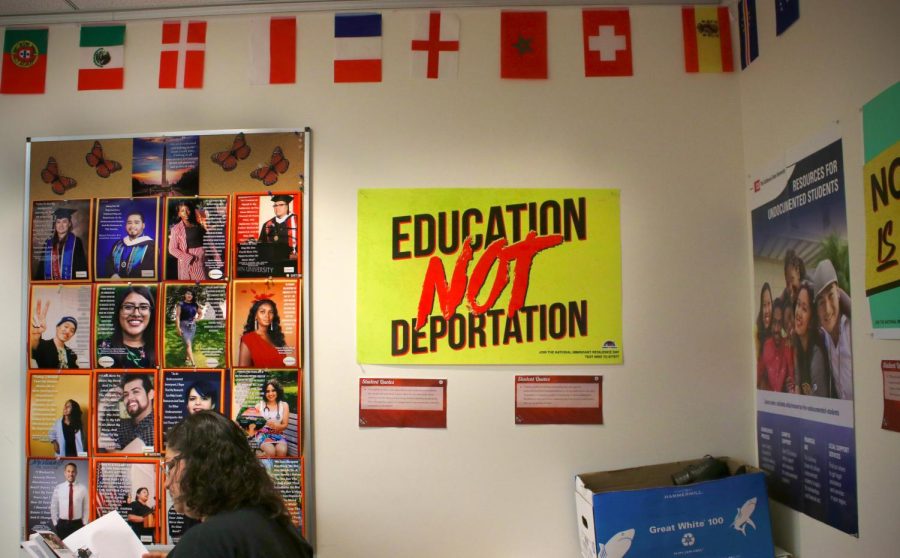“No Money, No Space”
May 5, 2022
The Reality of Advocating under the Confines of a Strict University Administration
March 17, 2022, is a day that will go down in California State University, East Bay history. The ribbon-cutting ceremony, celebrating the opening of four new affinity-based resources centers, resulted from 14 years of dedication and dead ends.
The battle to implement these resources has spanned across generations of student leaders. What initially began as an independent student-led movement around 2006-2007 wasn’t officially recognized by the university’s student government, Associated Students Inc., until 2015. Over 14 years later, we are finally starting to see these long-winded efforts come to fruition.
During the ceremony, prominent student advocates such as former ASI Presidents Pamela Sanchez and Daisy Maxion stood proudly before their peers and predecessors as they cut the ribbon, marking the monumental opening of the four new resources centers.
Although it is with open arms that the campus welcomes these centers, there are still questions that remain unanswered. With student-led efforts over the course of 14 challenging years, the question remains: If we are a campus that prides itself in supporting our diverse student population, why didn’t we have them sooner?
The seemingly-endless battle for the three centers can be accredited to the strict confines of the previous University Administration. For years, under the authority of prior President Morishita’s University Administration, advocates of the affinity-based centers faced a series of closed doors. Rocio Camarena, CSUEB Alum and now DISC & Student Centers Office Manager, were among the first few student advocates to fight for the approval of the affinity-based resource centers.
Camarena recalls a series of administrative refusals while she was a student at CSUEB in 2013. “A lot of the time, we tried to speak to staff members that we trusted and felt supported by. Then they would bring it up to their administrators to try and take it to the cabinet, where all the power lies for change in this institution, but it just never worked.”
In 2017, the Undocumented Student Task Force took the unique approach of gathering information from other CSUs regarding resources offered to their undocumented student population and the equity gap in comparison to CSUEB, which at the time, offered no official campus resources.
“Even with various affinity group staff members doing what we could like gathering information, gathering data, gathering testimonies and anonymous surveys responses- even with evidence like graduation rates, it was never enough,” added Camarena.
Although the student-led efforts warranted a newfound spark in 2015 when ASI officially recognized and essentially publicly supported the various movements, it is evident that the power of student initiatives can only go as far as the university’s administration allows them.
Sanchez and Maxion both expressed hardship in working under the previous administration of CSUEB President Leroy Morishita. “During my ASI Presidency, some of the major obstacles faced when advancing the movement for the affinity-based resource centers were finding out ways to work with the previous University administration,” Maxion noted.
As Camarena recalls, at one point, the Black Student Union (BSU) interrupted an ongoing cabinet meeting, demanding the space and opportunity to be heard. “Even with those kinds of moves from the students and even with us staff members doing what we could behind the scenes… it was never enough. The answer was always ‘no money, no space.’”
Fast forward to today, with the long-awaited implementation of the four affinity-based resource centers critical to the success of our diverse student population. “Within a month of being here, she (President Sandeen) committed to doing what President Morishita refused to do in eight years,” Camarena said.
Although there is a sense of relief for students, staff, and faculty that advocated on behalf of these centers for over 14 years, it is not the end of this ongoing battle. Under the administration of President Sandeen, there have been physical changes, but to provide students with lasting support, things have to change at the institutional level.
“If you think about it, the only thing this administration has done is rename an already existing box. They haven’t built anything like other campuses have; they haven’t invested money in providing a space that makes sense for students to build community together and receive the support they need,” Camarena stated.
Currently, the university has yet to hire a coordinator for the newly opened LatinX Student Success Center and a coordinator for the newly renovated Diversity and Inclusion Student Center (DISC), even after a month since the initial opening.
“Now there is this empty box in the old union called the Latinx Student Resource Center collecting dust because no one is occupying that space,” Camarena said. “Little progress can be achieved without these appointed roles, which are essential in closing the equity and graduation gaps amongst our students of color.”
Regardless, it’s a start. As Camarena concluded, “I am grateful for this progress and grateful that President Sandeen kept her word, but I want folks to know that for staff and faculty, like myself, who have been fighting this fight for well over a decade now, this is not enough, this can’t be it.

















